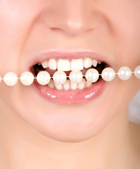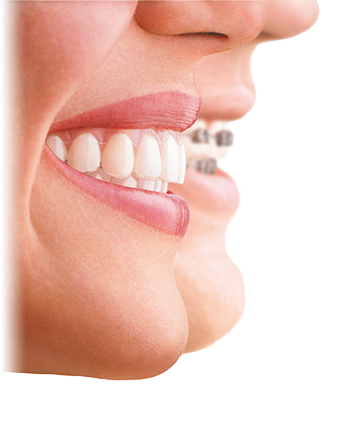 Some of the most common dental injuries occur when patients crack or break a tooth. This often happens while undertaking physical activity or can be the result of a head trauma, such as a car crash. Apart from being painful, these types of dental injury can also need complex cosmetic dental procedures to fix them. With cracks and breaks, dental bonding and fillings are sometimes insufficient, especially if the injury is quite severe, and in these instances a dental crown is the only option to save the tooth.
Some of the most common dental injuries occur when patients crack or break a tooth. This often happens while undertaking physical activity or can be the result of a head trauma, such as a car crash. Apart from being painful, these types of dental injury can also need complex cosmetic dental procedures to fix them. With cracks and breaks, dental bonding and fillings are sometimes insufficient, especially if the injury is quite severe, and in these instances a dental crown is the only option to save the tooth.
Dental crowns, or caps as they are sometimes known, can also be used to repair extensive damage to teeth caused by tooth decay. If the tooth has decayed to the point that it cannot support a filling, then it will need to crowned to protect it from further damage and ultimately tooth loss. Crowns are also used after root canal procedures when they are cemented in place to prevent any further infection and to restore the appearance of a natural tooth.
Before resorting to a crown, the dentist will always explore all the other possible avenues. This is because to apply a crown, a dentist will need to grind down the existing tooth to make it small enough to receive a crown and the adhesive cement. Once the tooth has been ground, it cannot repair itself and a crown must be worn there for life. Dentists use crowns when there is no other alternative and the integrity of the tooth has been damaged so badly as to leave no other option.
Various materials are used in the manufacture of crowns. They are usually made from porcelain, a form of ceramic, or alternatively a porcelain-metal alloy. These give the most realistic appearance and can be made from porcelain selected specifically to match the existing teeth of the patient. However, for the more extroverted, there is the option to have a crown made of gold or silver.
When fitting a crown, a dentist will first take a mould and x-ray of the patient’s teeth. Then using the very latest in 3D computer technology, they can produce an image of the teeth on a computer. This allows the manufacturing process to be incredibly accurate and means the crown can be designed to fit perfectly over the damaged tooth. If looked after correctly, with appropriate brushing and flossing, a crown can last between ten and fifteen years. Visit a Leeds dentist if you have a damaged or decayed tooth and would like to restore its natural appearance.
 In the hurly-burly lifestyle that the city of Leeds throws at you on a daily basis, it can often be hard to find a slot in your diary to get to the dentists to get yourself checked out, especially if a cosmetic problem crops up that needs doing in order to keep up appearances…Catch 22 eh? But there are treatments out there that get you in and out of the dentist’s chair in an hour and keep you smiling, one of which is dental bonding.
In the hurly-burly lifestyle that the city of Leeds throws at you on a daily basis, it can often be hard to find a slot in your diary to get to the dentists to get yourself checked out, especially if a cosmetic problem crops up that needs doing in order to keep up appearances…Catch 22 eh? But there are treatments out there that get you in and out of the dentist’s chair in an hour and keep you smiling, one of which is dental bonding.






 Over the last twenty years or so the common idea of dentistry has undergone a radical shift. A visit to the dentist’s in the past was either for a check up or to have some work done to repair or protect your teeth. This purely functional role of the dentist has begun to change as new technologies have been developed that have allowed dentist to make actual improvements to the condition and appearance of the teeth. Treatments such as whitening and dental bonding have given rise to the new cosmetic dentistry.
Over the last twenty years or so the common idea of dentistry has undergone a radical shift. A visit to the dentist’s in the past was either for a check up or to have some work done to repair or protect your teeth. This purely functional role of the dentist has begun to change as new technologies have been developed that have allowed dentist to make actual improvements to the condition and appearance of the teeth. Treatments such as whitening and dental bonding have given rise to the new cosmetic dentistry. It is never too late to improve the appearance of your teeth and this doesn’t necessarily mean shelling out thousands of pounds for expensive cosmetic dentistry. There are many things you can do at home or small dental procedures that can make your teeth look cleaner and healthier.
It is never too late to improve the appearance of your teeth and this doesn’t necessarily mean shelling out thousands of pounds for expensive cosmetic dentistry. There are many things you can do at home or small dental procedures that can make your teeth look cleaner and healthier. The health of our teeth and gums is one aspect of the body we can almost fully control. The practice of actively seeking to avoid the problems of gum disease and tooth decay is commonly known as preventative dentistry. This involves your dentist working with you and the dental hygienist to develop a plan of treatment to best help you avoid these conditions.
The health of our teeth and gums is one aspect of the body we can almost fully control. The practice of actively seeking to avoid the problems of gum disease and tooth decay is commonly known as preventative dentistry. This involves your dentist working with you and the dental hygienist to develop a plan of treatment to best help you avoid these conditions. In the past, patients and dentists have been slightly reluctant to use dental crowns unless absolutely necessary. This is because the old laboratory made crowns could often be bulky and require significant enamel removal to allow them to fit naturally over the top of the tooth. Removing otherwise healthy enamel is never ideal so dentists would often opt to use other treatments such as fillings and dental bonding.
In the past, patients and dentists have been slightly reluctant to use dental crowns unless absolutely necessary. This is because the old laboratory made crowns could often be bulky and require significant enamel removal to allow them to fit naturally over the top of the tooth. Removing otherwise healthy enamel is never ideal so dentists would often opt to use other treatments such as fillings and dental bonding. When a tooth is chipped, cracked or broken, either by sporting injury or some other kind of head trauma, it can be very painful. But the pain may last longer than just the original injury and may require extensive dental treatment to prevent further damage to the tooth. The dentist will first try to fix the tooth using composite dental bonding. If the damage is too severe to fix with resin the tooth may need a crown to protect it and restore its structural integrity.
When a tooth is chipped, cracked or broken, either by sporting injury or some other kind of head trauma, it can be very painful. But the pain may last longer than just the original injury and may require extensive dental treatment to prevent further damage to the tooth. The dentist will first try to fix the tooth using composite dental bonding. If the damage is too severe to fix with resin the tooth may need a crown to protect it and restore its structural integrity. Smiling is one of the most important communication methods we have. More important than any other physical or verbal gesture in making others feel comfortable and welcome. It is also fundamental in forming romantic, platonic and professional relationships. For people who are ashamed of their teeth smiling can be repressed for fear of being embarrassed. Everyone dreams of having the perfect beaming smile with straight white teeth and for those who fall short of this ideal it can be a source of great anxiety.
Smiling is one of the most important communication methods we have. More important than any other physical or verbal gesture in making others feel comfortable and welcome. It is also fundamental in forming romantic, platonic and professional relationships. For people who are ashamed of their teeth smiling can be repressed for fear of being embarrassed. Everyone dreams of having the perfect beaming smile with straight white teeth and for those who fall short of this ideal it can be a source of great anxiety. Some of the most common dental injuries occur when patients crack or break a tooth. This often happens while undertaking physical activity or can be the result of a head trauma, such as a car crash. Apart from being painful, these types of dental injury can also need complex cosmetic dental procedures to fix them. With cracks and breaks, dental bonding and fillings are sometimes insufficient, especially if the injury is quite severe, and in these instances a dental crown is the only option to save the tooth.
Some of the most common dental injuries occur when patients crack or break a tooth. This often happens while undertaking physical activity or can be the result of a head trauma, such as a car crash. Apart from being painful, these types of dental injury can also need complex cosmetic dental procedures to fix them. With cracks and breaks, dental bonding and fillings are sometimes insufficient, especially if the injury is quite severe, and in these instances a dental crown is the only option to save the tooth.

